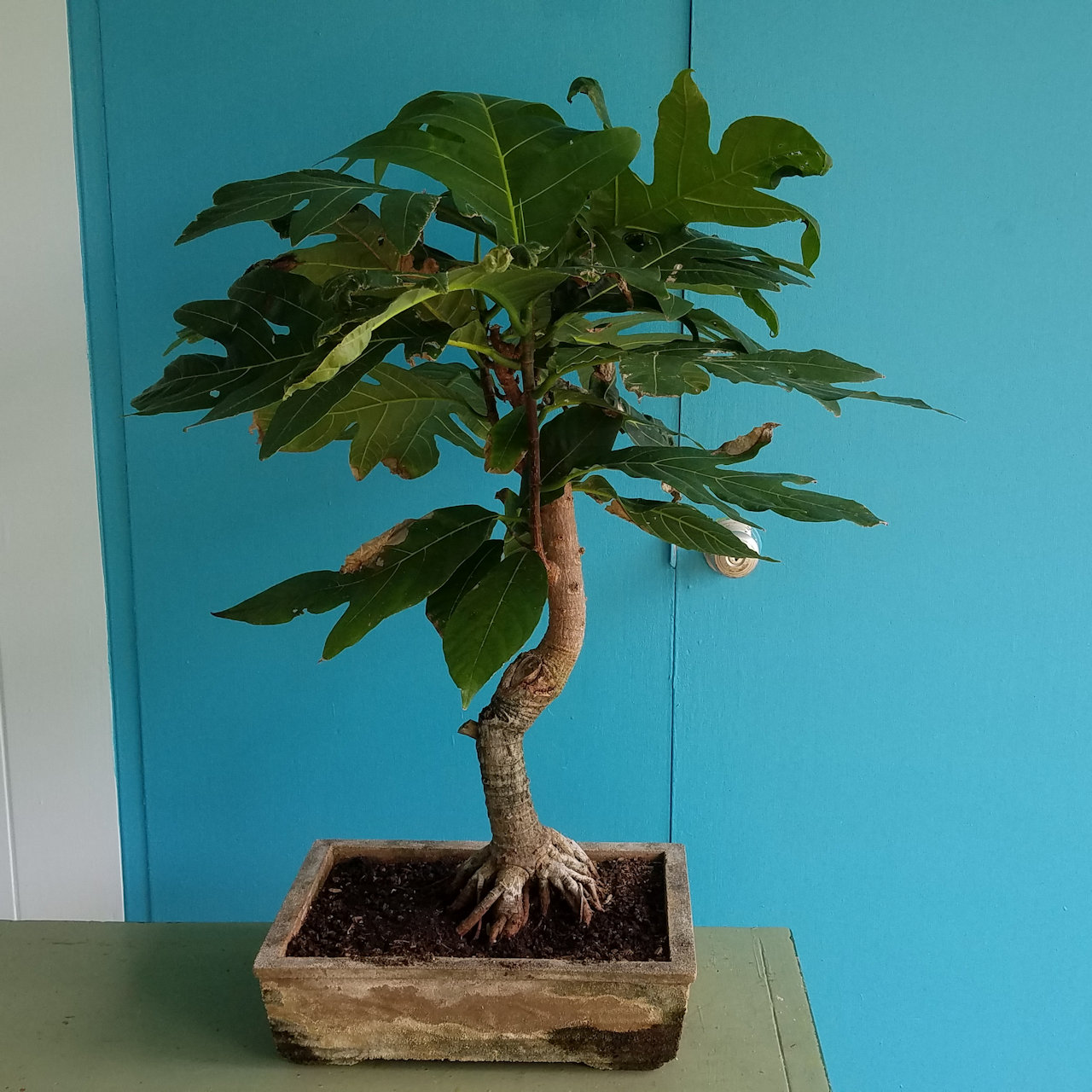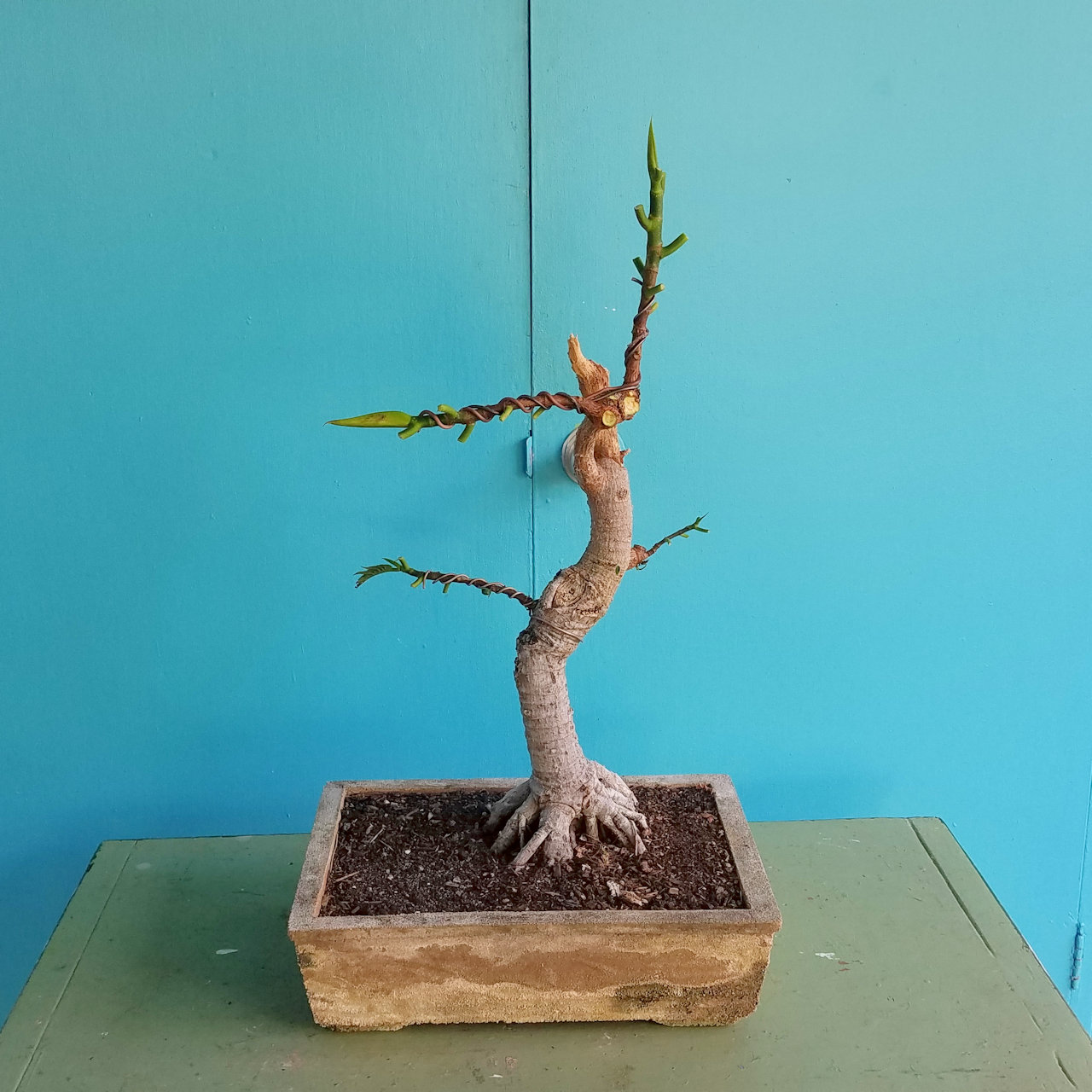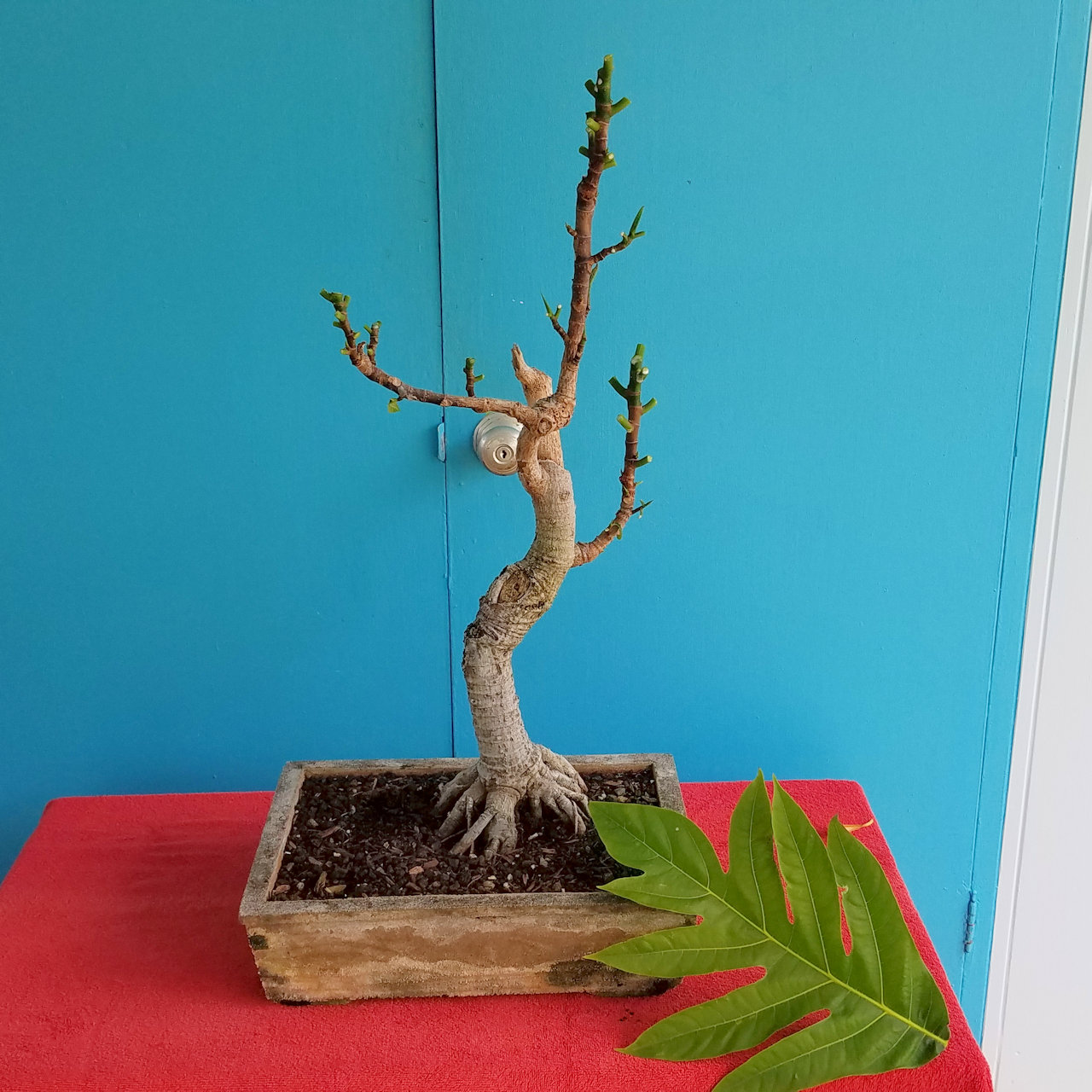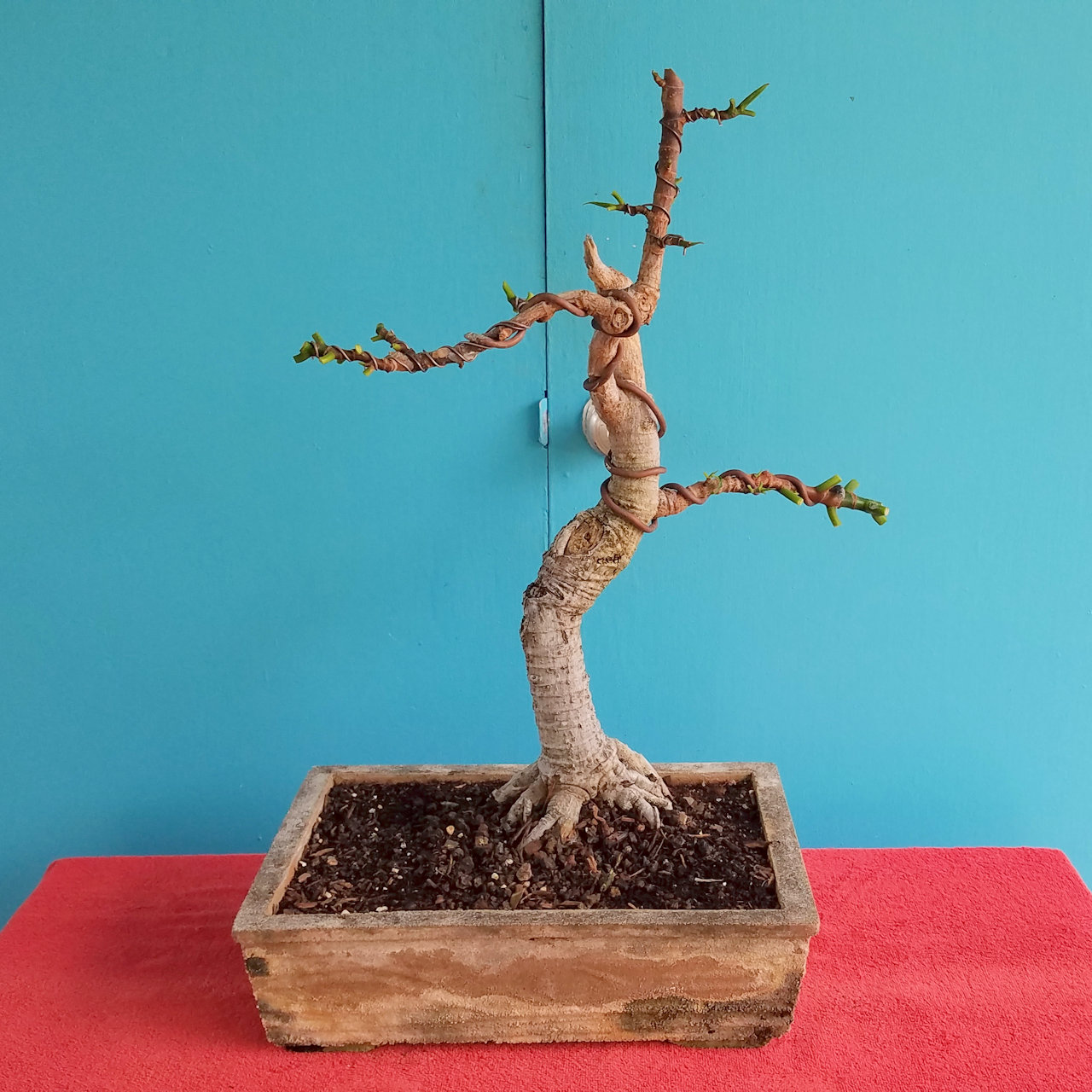Breadfruit Bonsai
September, 2019.
Never heard of a breadfruit (ulu) bonsai? Neither have I, so I thought I would give it a try. Breadfruit have been under cultivation in the Pacific
islands for thousands of years and can be propagated only from cuttings because the breadfruit has no seeds. I have a breadfruit tree in
a pot and it has been in training for bonsai for several years.
The breadfruit leaf is large and has a beautiful shape and is iconic in contemporary Hawaiian art. Small leaves are generally sought as a
feature of bonsai for obvious reasons of scale, but there are exceptions. European figs have leaves large enough to hide the genitalia of
Adam and Eve, but they are occasionally seen as bonsai. That they drop their leaves in winter gives them a fine winter silhouette. Breadfruit
have leaves all year long but the leaf size may be reduced by defoliation. We will see if this results in an acceptable bonsai. I think it could.

Growing in a large concrete pot, my breadfruit tree has an impressive rootage (nebari), and this is what attracted my attention in regard to
the bonsai potential of the breadfruit.

I cut off the large leaves, pulled the tree out of its pot, and I am removing most of the soil from the roots on a screen.

Here the breadfruit is soaking in a pan of water in the shade on the side of my house while I take care of the old soil and pot.

I removed all remaining soil from the roots using fingers and hose water.

I have pruned the roots to fit into the concrete bonsai pot I have selected for the tree.

Potting soil is put around the roots and watered in to provide intimate contact with the roots.

Finally, more potting soil is mounded on the nebari and a layer of wet sand is added to firm up the grip on the tree while it recouperates.
Six Months Later

Tuesday, March 24, 2020, I photographed the breadfruit bonsai. It has grown pretty much wild, with a single pruning in the interval.

The breadfruit bonsai after pruning and wiring.
Eight Months Later
I again worked on the breadfruit bonsai in November of 2020.

The breadfruit bonsai on the growing bench, center front. Click the image to see the full resolution version.

The breadfruit tree is first defoliated.

Then the excess branches are cut off and the remaining branches are wired. The lower branches will need to catch up to the upper one.
Five Months Later
I worked on my breadfruit bonsai again in April of 2021.

April 20, 2021. The tree continued to grow on the bench.

Defoliating reveals the structure of the tree.

After wiring. The tree is ready to go back on the growing bench.
 Email Richard dot J dot Wagner at gmail dot com
Email Richard dot J dot Wagner at gmail dot com
BreadfruitBonsai.html: this hand crafted, human readable HTML file was created September 8, 2019.
Last updated April 20, 2021 by
Dr. Rick Wagner. Text and images Copyright © 2019-2021, unless otherwise attributed, all rights reserved.















 Email Richard dot J dot Wagner at gmail dot com
Email Richard dot J dot Wagner at gmail dot com